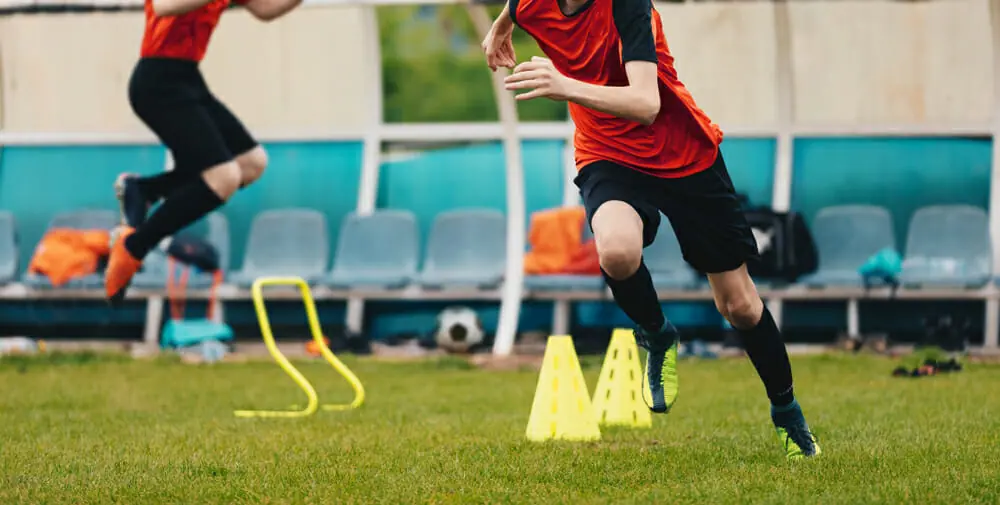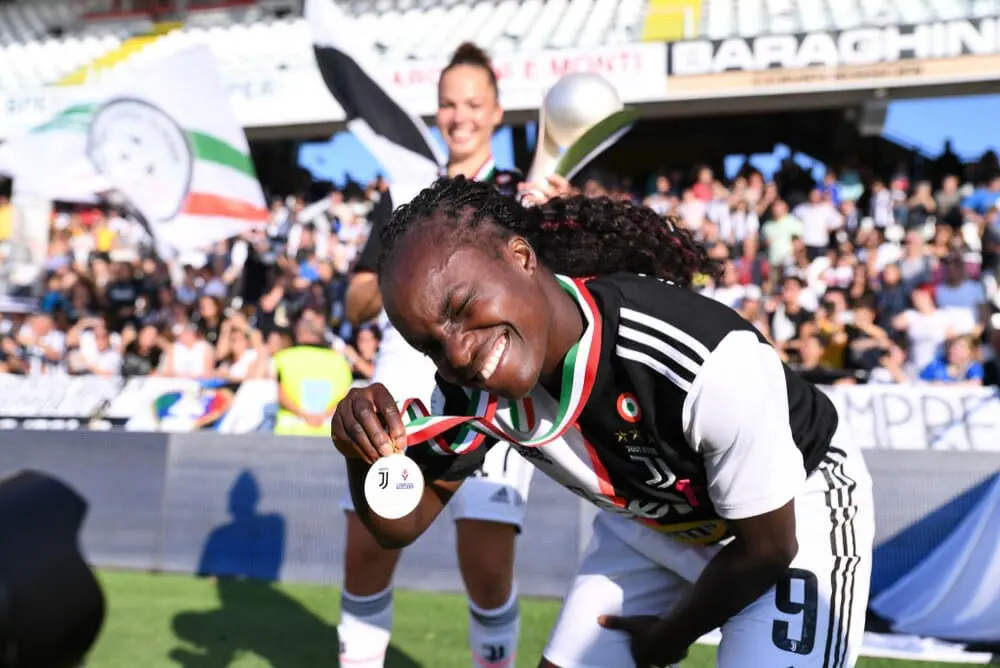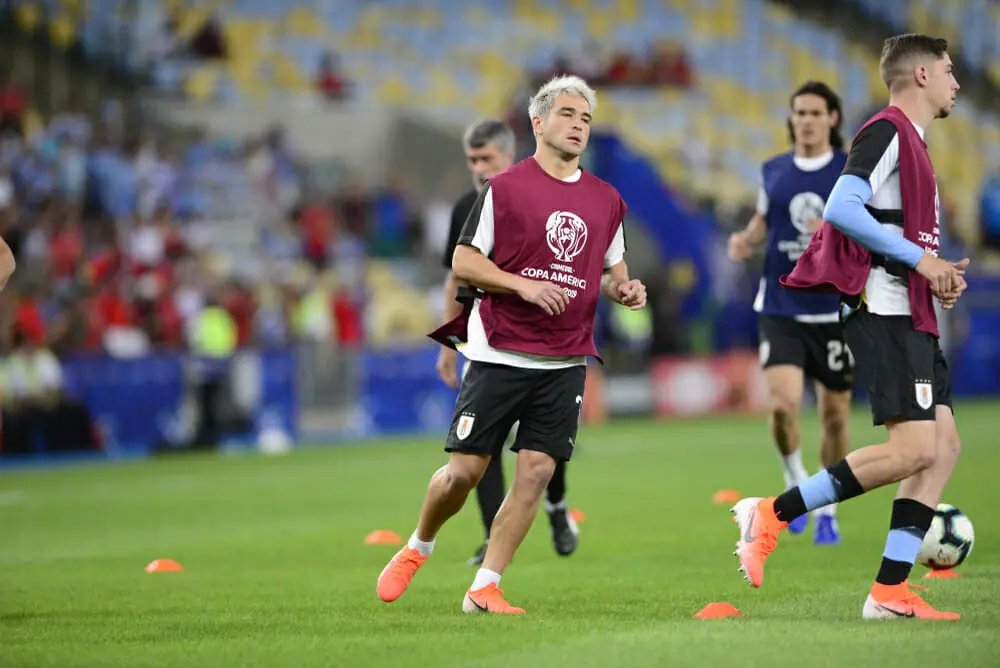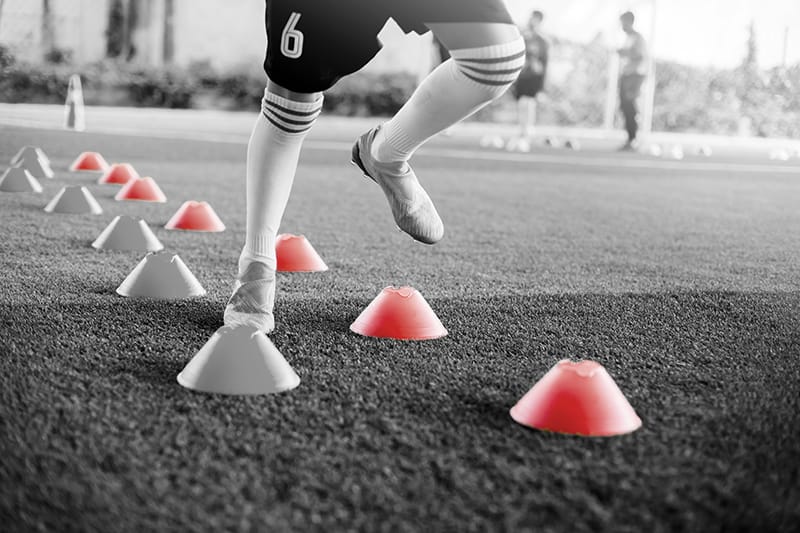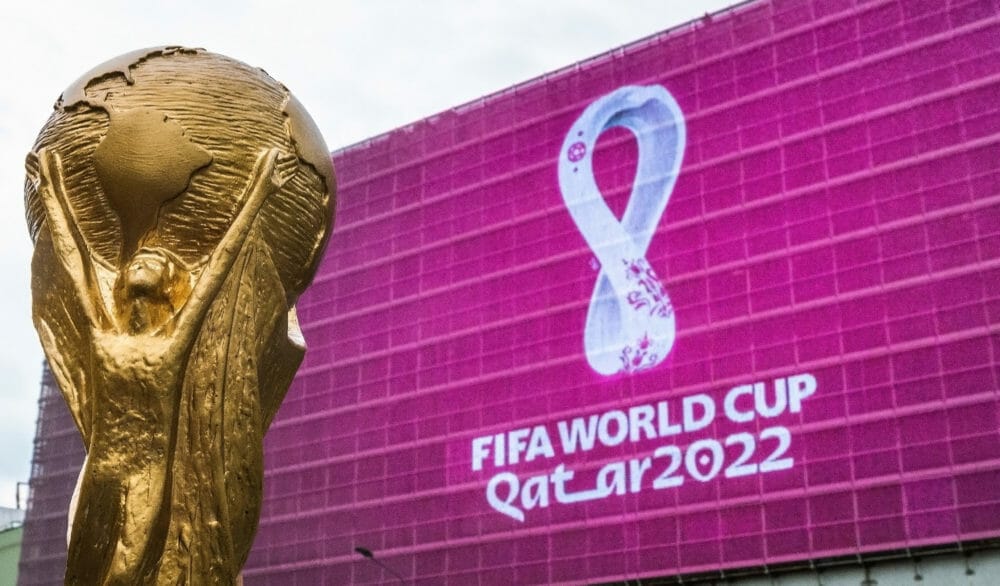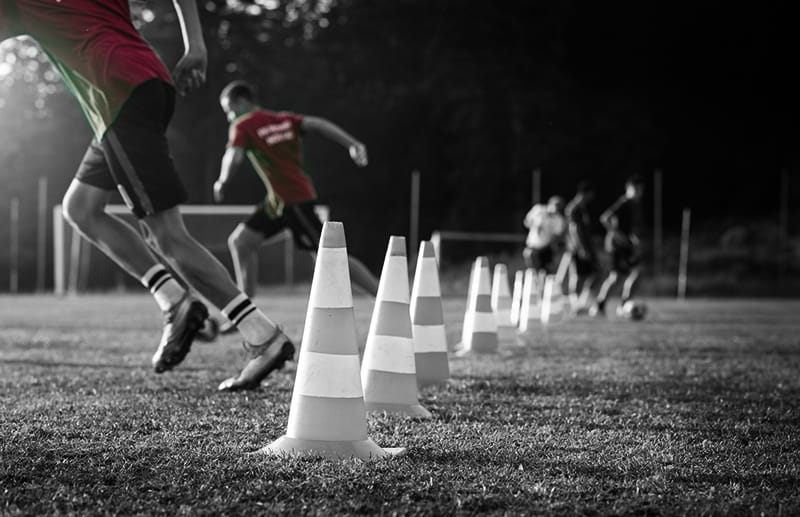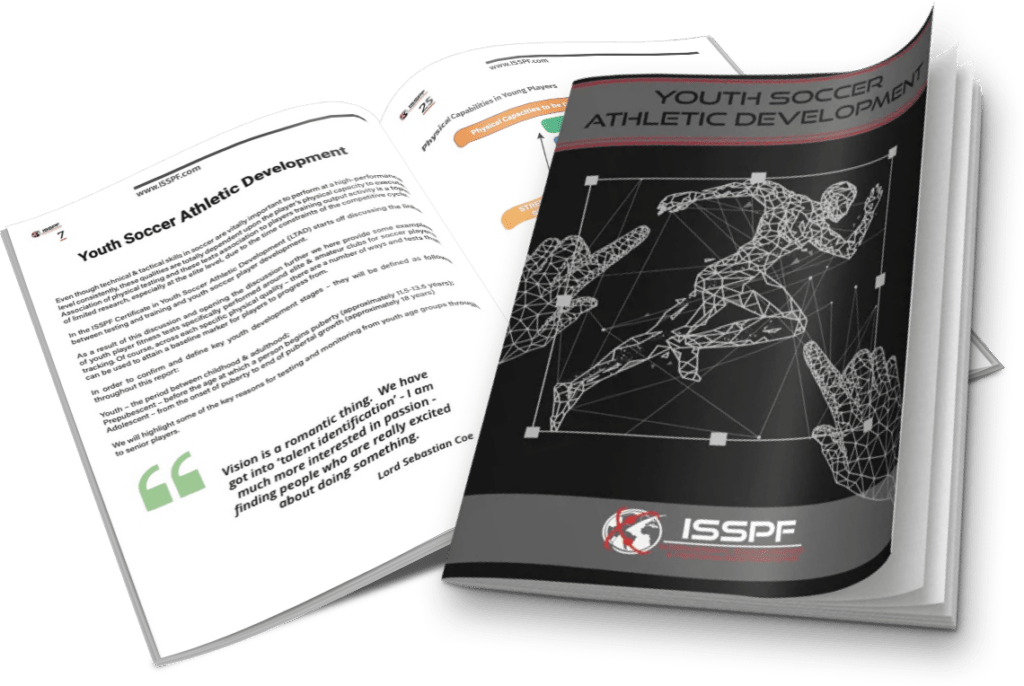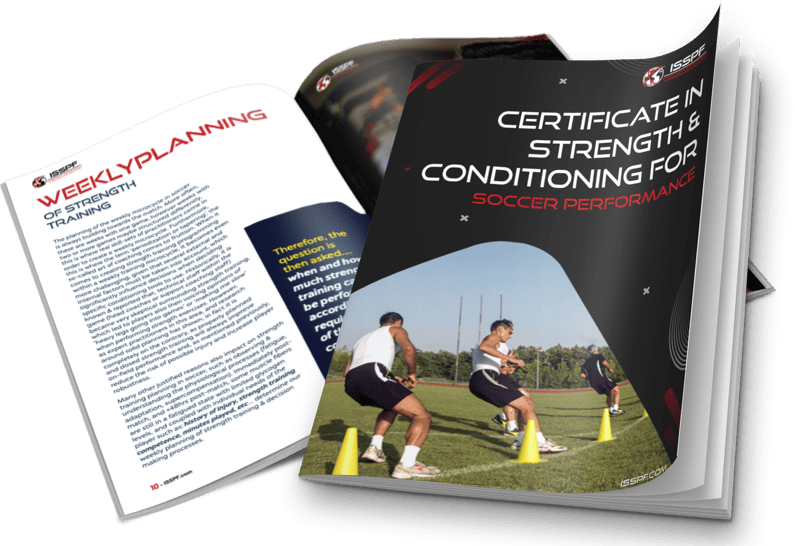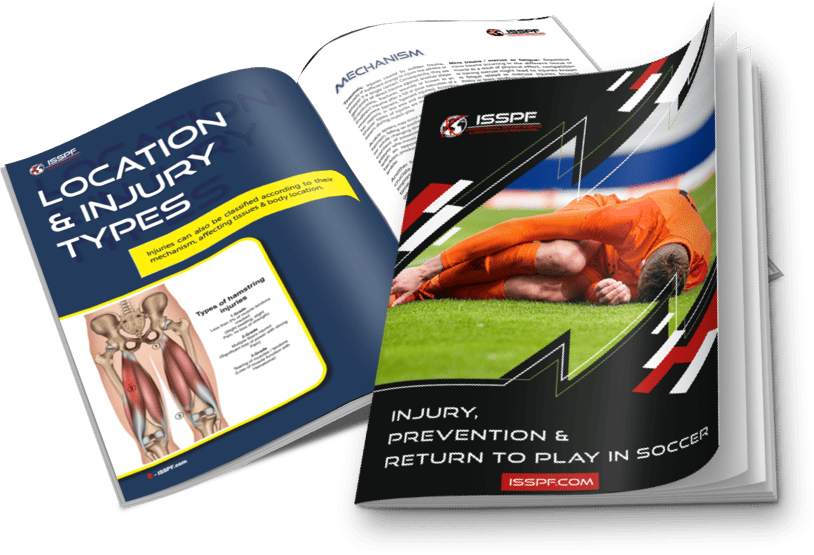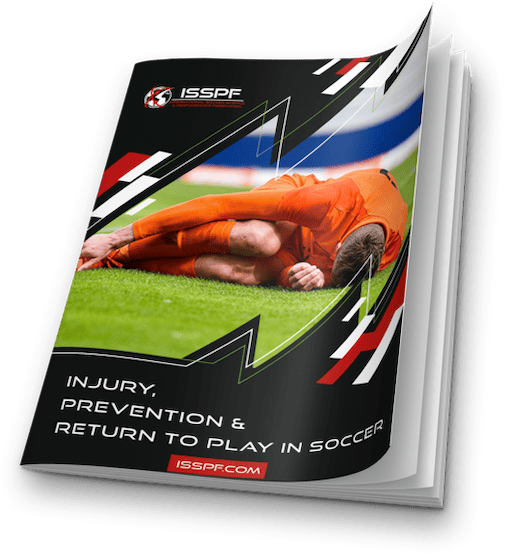The engagement and recent developments in both the tactical detail and physical performance of team sport athletes, has been as a result of sport science pushing boundaries and innovative techniques in order to maximise performance.
“Sports science, without question, is the biggest & most important change in my lifetime… It has moved the game onto another level that maybe we never dreamt of all those years ago… Sports Science has brought a whole new dimension to the game.”
Sir Alex Ferguson
Former Manchester United & Aberdeen FC Manager
The Use of Conditioning in Football
The use of football as a conditioning tool was previously believed to be unable to provide a sufficient exercise intensity to improve fitness for football players (Hoff et al., 2002; Owen et al., 2014; Özcan, Eniseler and Şahan, 2018).
It was this belief that saw the reliance on the use of small-sided games training develop, with non-specific running programs being utilized to improve the endurance components of players (Dupont and McCall, 2016).
However, recent literature found that various sided football games are both valid and ecological in reproducing the physical, technical and tactical requirements of football match play (Castellano, Casamichana and Dellal, 2013; Clemente et al., 2016).
Whilst the use of football has been validated, it’s important to analyse the literature further to gain an understanding of which games should be used to develop different physical components, namely: speed; repeated sprint ability (RSA); and speed endurance.
Before discussing which specific game develops each physical component, it’s important to understand why they are important.
When analysing the physical requirements of the game we find that 10-20% of a football match involve high intensity activities, with these activities ultimately deciding where games are won or lost (Little and Williams, 2005; Stølen et al., 2005; Ade et al., 2014; Owen and Dellal, 2016).
3 Key Components of Speed in Soccer
Speed is a key performance characteristic in football, with speed training being broken down into 3 basic components:
- Acceleration
- Maximum speed
- Agility
(Little and Williams, 2005; Strudwick and Walker, 2016)
It has been reported that football players rarely achieve maximum sprint speed in matches, with the acceleration phase having a higher value in football performance – this is when a player explosively moves away from an opponent over a short distance (Jovanovic et al., 2011; Dawes and Roozen, 2012).
Taking this into consideration, as well as that football player complete numerous directional changes, agility has been suggested as being of more functional importance than straight-line speed (Jovanovic et al., 2011; Owen and Dellal, 2016).
Agility has two key functions in football, firstly it contributes to the ability to out-manoeuvre opposition players, and secondly, having an injury prevention characteristic (Jovanovic et al., 2011; Dawes and Roozen, 2012).
Repeated sprint ability is seen as being an important component in football due to the requirements of the match-play, whereby players repeatedly have to produce maximal and/or near-maximal actions in a short duration, with brief periods of recovery in between (Ferrari Bravo et al., 2008; Iaia, Rampinini and Bangsbo, 2009).
Speed endurance training is done to enhance a player’s power and capacity to perform high-intensity activities) (Ade et al., 2014; Strudwick and Walker, 2016). Speed endurance can be divided into two specific categories, namely: speed-endurance production (SEP) and speed-endurance maintenance (SEM)(Iaia et al., 2015) (Iaia et al, 2015).
A player’s power is enhanced during SEP training by improving the player’s ability to recovery after a maximal effort, which will allow for an increased amount of maximal intensity efforts.
A player’s capacity for high intensity actions is improved during SEM training by reducing the player’s recovery periods and forcing the player to develop speed when fatigued (Iaia, Rampinini and Bangsbo, 2009; Iaia et al., 2015; Owen and Dellal, 2016).
Now about each of the physical components and why they are important, let’s look at what games will develop them.
Speed
Researchers have found that total distance, distances run at high speed (>14km/h), as well as absolute maximum velocity all increased with an increase in pitch size and player number (10v10 > 7v7 > 5v5), and that total distance, very high and maximal speed distances were higher in the game format that included goalkeepers (versus possession).
Whilst there were a greater number of accelerations and decelerations in the smaller sided (5v5 > 7v7 > 10v10) (Gaudino, Alberti and Iaia, 2014).
Simply put, if you want to train maximal speed, use bigger field sizes and larger games (8v8 – 11v11). If you want to train agility, use smaller field sizes, with smaller player numbers (4v4 and 5v5).
Repeated Sprint Ability
In a paper published by ISSPF faculty member, Adam Owen (2012), it was found that a progressive overload of 3v3s played on a 30x25m pitch (Table 1), over a 7-week period was able to significantly improve RSA, and total sprint time.
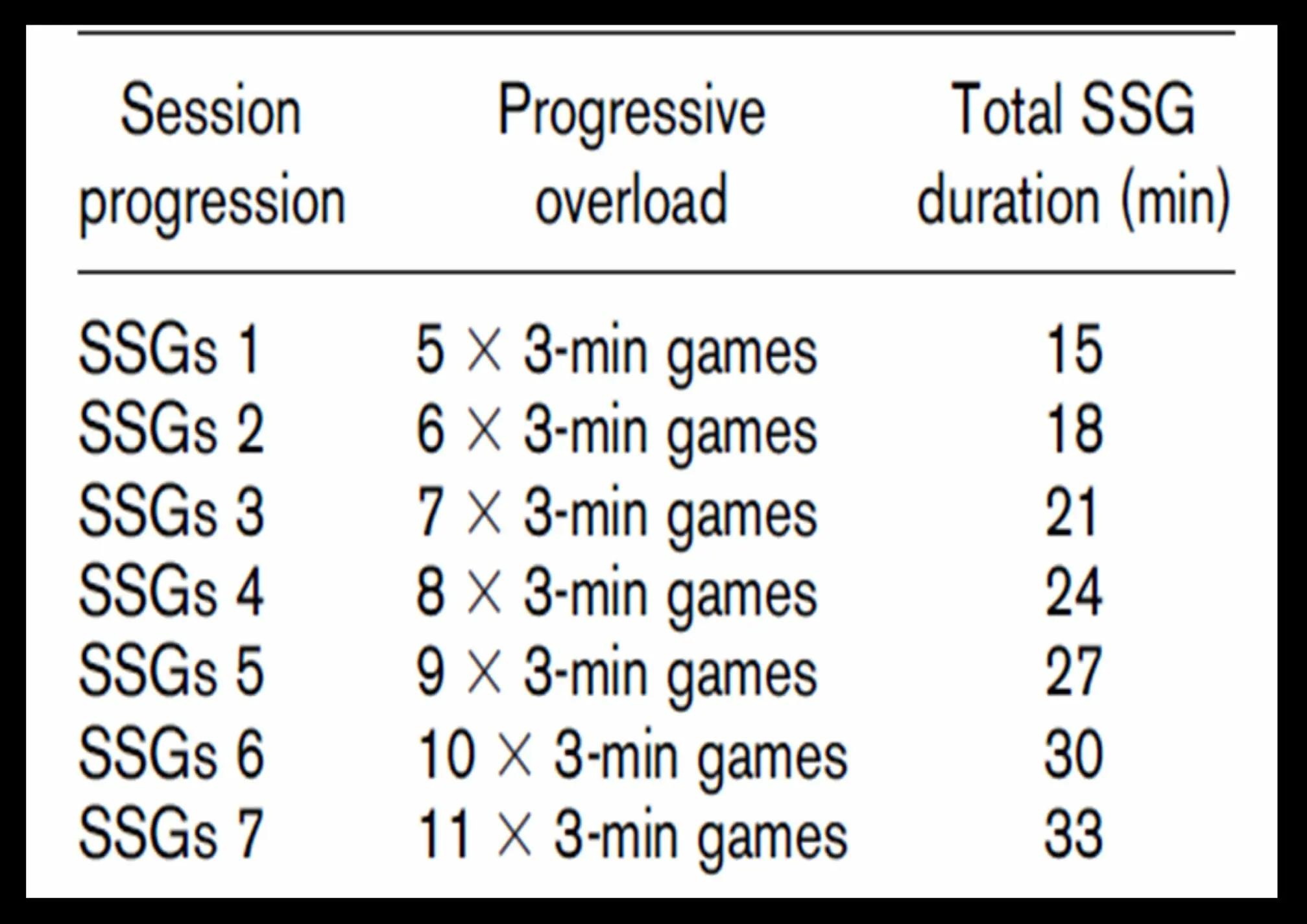
Speed Endurance
Finally, it has been found that 1v1 of short durations (20-40 seconds) and a recovery period of ≥ 4 times exercise duration is capable of developing SEP; whilst 2v2 games of 30 – 90 seconds in duration, with a rest period of 1-3 times the exercise duration was able to develop SEM (Iaia, Rampinini and Bangsbo, 2009; Iaia et al., 2015; Owen and Dellal, 2016).
Conclusion
I hope this has shed more light on the value of different-sized football games and how they can develop important physical components associated with the game and overall fitness for football.
This is not to take away from generic running drills that develop these components, but rather to highlight that if timelines are short and you want to include football-specific actions in your development of players, then there are options available to you.
Join Our Soccer Performance Course
Here at ISSPF we are offering people the opportunity to stay ahead of the game by becoming a real students of the game.
We aim to ensure players across all levels are exposed to the best practice in terms of fitness, technical development, tactical analysis, soccer science & nutrition, strength & conditioning techniques & injury reduction strategies that will assist to enhance performance of individuals and collectively teams.
Not only are we keeping things simple for individuals who are keen to progress in their own area of development within team sport and soccer.
But we are enhancing the capability to self-develop through our unique faculty of staff and elite practitioners to bring key messages and expert advice to the comfort of your own preferred learning environment.
The demand for sports science, physiotherapists, and performance & coaching specialists in football & team sports is growing year upon year.
Thousands of students are leaving university with a sports science degree, physio or therapy-related qualification, however many of them asking the key question – What now?
- How do I get a job in football?
- What’s the next step?
- Which area of sport or football science & medicine do I want to specialise in?
This is certainly an interesting question as progressing from completing a sporting, medical or therapy-related degree to then working in professional football & trying to understanding all the key components, and soft skills that come with jobs in football or careers within sport is complex.
As a result, the bespoke courses developed by ISSPF Elite Medical & Football Science Faculty members are a way of further exposing learners, parents, professional coaches, students, or other individuals interested in football science with a thirst to develop & upskill further.
The link below will take you to the hugely popular & expertly designed ISSPF endorsed & University & Football Association accredited Soccer Science & Performance online sport science course, where you will be exposed to sports medicine & football science with a coaching science led research overview, and practical examples used by the game’s leading practitioners.
Soccer Science & Performance Online Sport Science Course
How This Course Will Improve You
- Provides justification for the guiding of specific training methods, interventions & decision making processes within soccer.
- Highlights the practical application of modern, research based training methods & assessment tools.
- Provides an increased evidence & knowledge to understand key soccer science & performance processes across a range of coaching science topics.
- Discusses the most efficient training methods and detailed insights into developing player fitness alongside rehabilitation & training methodologies.
- Learn from industry experts in the area of football science, nutrition, sport science & performance training in team sports.
- Help maximise your decision making through a better understanding & appreciation of football or soccer science.
What Does This Course Cover?
Outline of the Soccer Science & Performance Course:
Module 1: The demands of professional soccer: Physiological costs of the game
Lecturer: Dr. Vasilis Kalapthorakos (Greece)
Topic: Physiology
Module 2: Developing Resilience in Soccer: Mental Skill Development
Lecturer: Nikki Crawley (England)
Topic: Psychology
Module 3: Game model building & development: Reinterpreting Tactical Periodisation
Lecturer: Dr. Alejandro Romero-Caballero (Spain)
Topic: Training Methodology
Module 4: Injury reduction strategies in professional soccer
Lecturer: Dr. Patrick Orme (England)
Topic: Injury Prevention
Module 5: Leadership and Culture for High Performance Soccer
Lecturer: Maximillian Lankheit (Germany)
Topic: Psychology
Module 6: Current trends in leading European soccer teams: In-Possession
Lecturer: Chris Meek (England)
Topic: Performance Analysis
Module 7: Soccer nutrition & the role of the nutritionist
Lecturer: Matthew Jones (England)
Topic: Nutrition
Module 8: Competitive soccer training microcycle: Structure & justification
Lecturer: Dr. Manuel Segovia (Spain)
Topic: Training Methodology
Soccer Science & Performance Online Sport Science Course
Article References
Ade, Jack David et al. (2014) ‘Physiological response, time – motion characteristics, and reproducibility of various speed-endurance drills in elite youth soccer players: small-sided games versus generic running’, International Journal of Sports Physiology and Performance, 9, pp. 471–479. doi: 10.1123/IJSPP.2013-0390.
Castellano, J., Casamichana, D. and Dellal, A. (2013) ‘Influence of game format and number of players on heart rate response and physical demands in small-sided soccer games’, Journal of Strength and Conditioning Research, 27(5), pp. 1295–1303.
Clemente, F. M. et al. (2016) ‘Heart rate responses and distance coverage during 1 vs. 1 duel in soccer: effects of neutral player and different task conditions’, Science and Sports, 31(5), pp. e155–e161. doi: 10.1016/j.scispo.2015.09.006.
Dawes, J. and Roozen, M. (eds) (2012) Developing agility and quickness. Champaign, IL: Human Kinetics.
Dupont, G. and McCall, A. (2016) ‘Targeted systems of the body for training’, in Strudwick, T. (ed.) Soccer Science. Champaign, IL: Human Kinetics, pp. 221–254.
Ferrari Bravo, D. et al. (2008) ‘Sprint vs. interval training in football’, International Journal of Sports Medicine, 29(8), pp. 668–674. doi: 10.1055/s-2007-989371.
Gaudino, P., Alberti, G. and Iaia, F. M. (2014) ‘Estimated metabolic and mechanical demands during different small-sided games in elite soccer players’, Human Movement Science. Elsevier B.V., 36, pp. 123–133. doi: 10.1016/j.humov.2014.05.006.
Hoff, J. et al. (2002) ‘Soccer specific aerobic endurance training’, British Journal of Sports Medicine, 36(3), pp. 218–221. doi: 10.1136/bjsm.36.3.218.
Iaia, F. M. et al. (2015) ‘The effect of two speed endurance training regimes on performance of soccer players’, PLoS ONE, 10(9), pp. 1–16. doi: 10.1371/journal.pone.0138096.
Iaia, F. M., Rampinini, E. and Bangsbo, J. (2009) ‘High-intensity training in football.’, International journal of sports physiology and performance, 4(3), pp. 291–306. doi: 10.1123/ijspp.4.3.291.
Jovanovic, M. et al. (2011) ‘Effects of speed, agility, quickness training method on power performance in elite soccer players’, Journal of Strength and Conditioning Research, 25(5), pp. 1285–1292. doi: 10.1519/JSC.0b013e3181d67c65.
Little, T. and Williams, A. G. (2005) ‘Specificity of acceleration, maximum speed, and agility in professional soccer players’, Journal of Strength and Conditioning Research, 19(1), pp. 76–78. doi: 10.1519/14253.1.
Owen, A. and Dellal, A. (2016) Football conditioning: a modern scientific approach – fitness training, speed and agility, injury prevention. Edited by A. Fitzgerald. S.I.: SoccerTutor.com.
Owen, A. L. et al. (2012) ‘Effects of a periodized small-sided game training intervention on physical performance in elite professional soccer’, Journal of Strength & Conditioning Research, 26(10), pp. 2748–2754.
Owen, A. L. et al. (2014) ‘Physical and technical comparisons between various-sided games within professional soccer’, International Journal of Sports Medicine, 35(4), pp. 286–292. doi: 10.1055/s-0033-1351333.
Özcan, İ., Eniseler, N. and Şahan, Ç. (2018) ‘Effects of Small-Sided Games and Conventional Aerobic Interval Training on Various Physiological Characteristics and Defensive and Offensive Skills Used in Soccer’, 50, pp. 1–8.
Stølen, T. et al. (2005) ‘Physiology of Soccer’, Sports Med, 35(6), pp. 501–536. doi: 10.2165/00007256-200535060-00004.
Strudwick, T. and Walker, G. (2016) ‘Conditioning Progammes for competitive levels’, in Strudwick, T. (ed.) Soccer Science. Champaign, IL: Human Kinetics, pp. 247–259.
Share this article:

